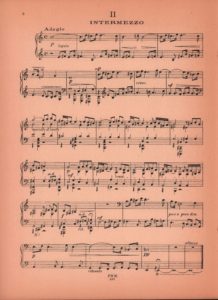Triptych for piano, dated 1932, is one of Roman Maciejewski’s first surviving and published works. It consists of the following movements: Preludium (Allegro), Intermezzo (Adagio), Fuga (Allegro ma non troppo).
The titles suggest that the composer draws on various conventions in the piece, particularly on the Baroque tradition. And this indeed is the case: the prelude is improvised in nature, the intermezzo is like a short two-part invention (although with a distinct homophonic part) and there is a four-part fugue with a coda in the last movement. Thus it is an excellent example of a work representing the neoclassical strand in Roman Maciejewski’s oeuvre.
The musical material of the composition is integrated thanks to the use of motivic weaving and imitation, while when it comes harmony, the piece is an interesting and modern (given the period in which it was written) example of a combination of major-minor, polytonal and modal elements. However, all these technical devices did not generate much enthusiasm of the first reviewer of the Tryptich, who described it as an “ordinary student piece” (Muzyka 1934 no. 2, p. 77).
- R. Maciejewski, Triptych for piano, cover (PWM Edition)
- R. Maciejewski, Triptych for piano, no. 3, Fugue, score excerpt (PWM Edition)
- R. Maciejewski, Triptych for piano, no. 2, Intermezzo, score excerpt (PWM Edition)
- R. Maciejewski, Triptych for piano, np. 1, Prelude, score excerpt (PWM Edition)



